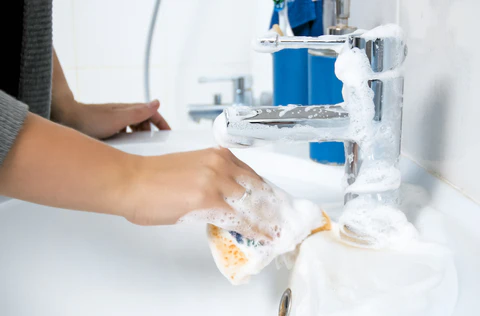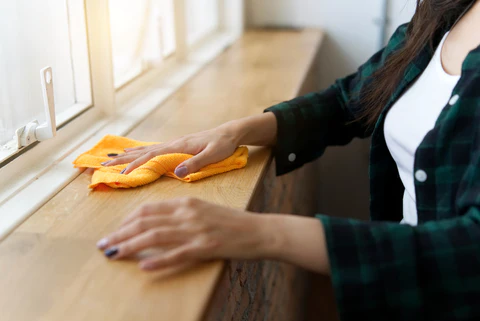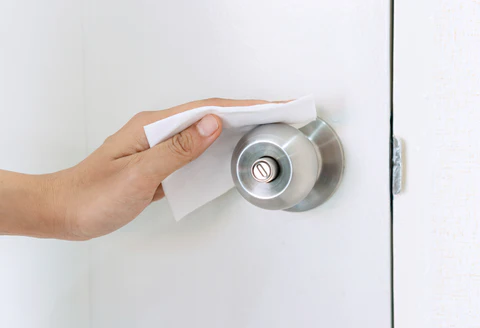Clean, Sanitize And Disinfect—What’s The Difference?
What’s The Difference Between Cleaning, Sanitizing And Disinfecting?
Often people use the words “clean”, “sanitize” and “disinfect” interchangeably, which leads many to think that they all mean the same thing, but they’re actually quite different! Learn the key facts and differences between each below!

Cleaning
Removes dust, debris and dirt from a surface or objects. When you clean, you will likely use soap and water, or an all purpose surface spray to physically clean off the surfaces and objects. This may not necessarily kill the germs, but since you removed some of them, there are fewer germs that could spread infection to you.

Sanitizing
Refers to lowering the number of germs on a surface to a safe level, as judged by public health standards or requirements. This process works either through cleaning which physically removes germs from surfaces, or disinfecting which kills germs. Sanitizing is generally a little more gentle than disinfecting and only destroys or eliminates all forms of microbial life. Sanitizing kills bacteria like Staph and E. Coli.

Disinfecting
Uses chemicals, or disinfectants, to kill germs on surfaces and objects. It destroys or inactivates both the bacteria and viruses like influenza and rhinovirus on hard, nonporous surfaces. You usually need to leave the disinfectant on the surfaces and objects for a certain period of time to kill the kill pathogenic microorganisms. Disinfecting does not necessarily clean dirty surfaces. Disinfecting kills bacteria and viruses, and can help stop the spread of COVID-19.
Should you be Disinfecting, Cleaning or Sanitizing your house?
You should regularly clean your house with soap and water or an all purpose cleaner, to stay on top of messes and keep your home in tip top shape! As for disinfecting and sanitizing, Infection preventionist, Amy Braden says, in the age of COVID-19, “We don’t need perfectly disinfected houses. We just need to remove the bulk of germs so that when we’re going about our daily lives, we don’t have as many risk factors for getting communicable infections.”
For routine household needs, using a disinfectant is most important for bathrooms; kitchens where raw meat is handled, prepped or cooked; and places of frequent contamination, such as doorknobs and keys. It’s important to keep in mind, that when a member of the household is sick, using a disinfectant is useful for all surfaces an individual may have contaminated with their germs.
How To Disinfect Surfaces
Follow these 4 easy steps to disinfect effectively:
- Pick a disinfectant. Disinfectants that are EPA-approved for use against COVID-19 will work best.
- Apply it. Read the label to find out what surfaces your disinfectant works best on, then apply as instructed.
- Let it sit. The label will tell you how long the surface should stay visibly wet with the solution. This will ensure all bacteria and viruses are killed.
- Rinse & dry. If instructed by the label, rinse down your disinfected surface with water before air drying. And done!
